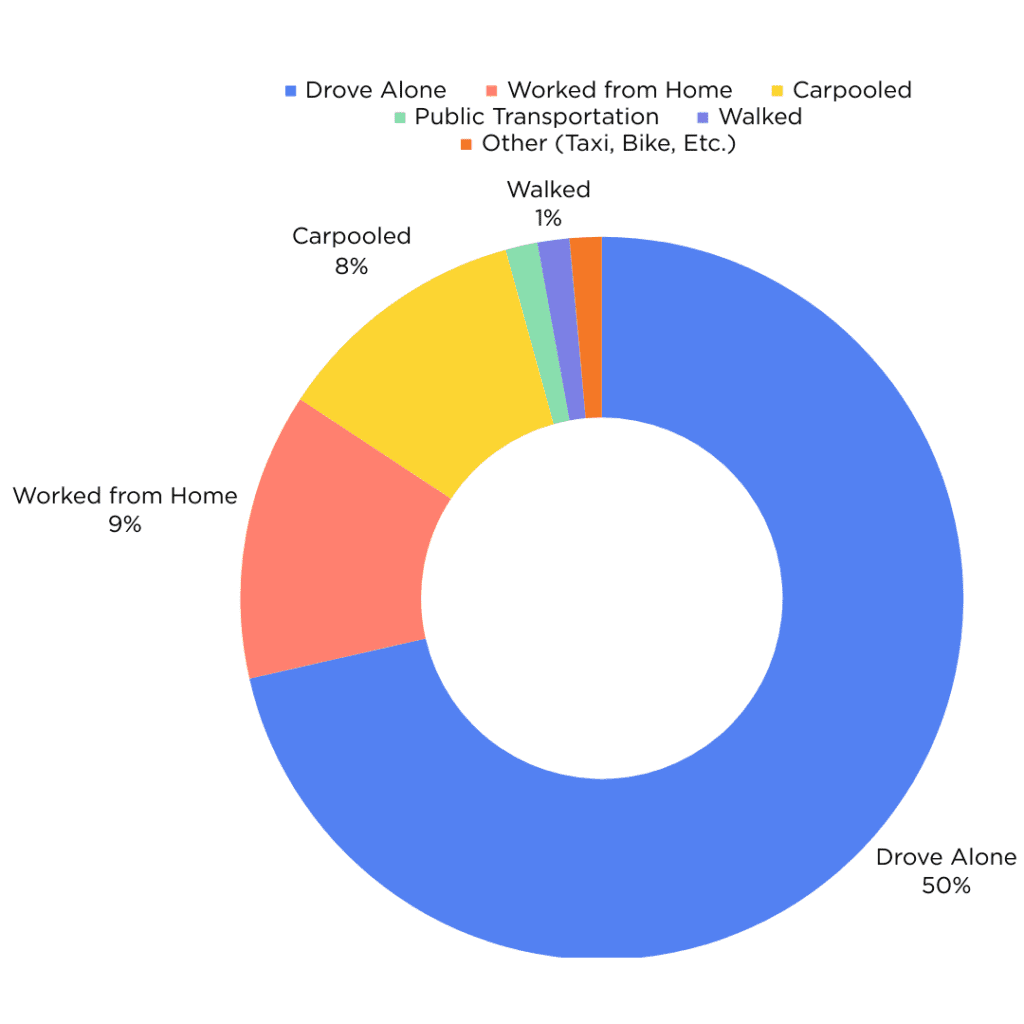Transportation Remains a Critical Community Need
-
In Omaha, working families are reliant upon personal vehicles – but 20,000+ don’t have a vehicle at all
-
Even with big solutions in progress, transportation remains a Top 5 unmet community need
-
UWM can contribute by promoting extended hours, mobile and delivery resources to improve access to critical resources
The Omaha-Council Bluffs metro is a hub of the Nebraska economy, which requires a strong transportation infrastructure. With a population expected to grow to more than 1 million by 2024, getting people to jobs, school and more is no easy task. A transportation network is designed to carry people to critical destinations, just like arteries direct blood in the body. But a body with poor circulation struggles with normal, daily activities. The same can be said for transportation. A healthy and vibrant community depends on a healthy transportation ecosystem.
UWM’s community research team inventoried 26 local research studies or planning efforts – and transportation was referenced as a topic, need or community priority 14 times. It comes as no surprise that transportation is among the most visible topics in our community; previous community and UWM studies alike consistently identify transportation as a top community priority, with organizations and individuals alike seeking more connectedness across the metro. In the 2022-2023 calendar year, 211 made more than 3,500 referrals for transportation, with more than 700 specifically related to employment. At this volume, transportation is among the Top 5 user needs.
As a basic need, transportation challenges often hit low-income families the hardest.
For many, the commute to work or school happens in a car. According to collaborative transportation research, 80% of local residents use a car to travel to work and/or school.
The metro Area is Heavily Reliant Upon Personal Vehicles
Means of Transportation to work

Vehicle access challenges are especially concentrated in North Omaha and Council Bluffs
People without Vehicle Access by Census Tract

Such pockets of our metro then face an uphill battle for economic mobility. Without a vehicle, families often rely on friends, community resources or public transportation to get them from one critical appointment to another. Surprisingly, a staggering 33% of those who rely on public transit for their work commute spend 45 minutes or more in transit. Inaccessible transportation can leave workers delayed or stranded, and a lack of options means that people who work irregular schedules often have limited options to get to work.
These limitations can have devastating impacts. Through the Court Referral Community Service Program (CRCSP), UWM facilitates community service for people who have been ordered hours to complete. These individuals have committed an offense and are on probation, working to complete hours and get back on track. However, if they have required community service hours as a result of a DUI and can’t drive, or otherwise don’t have a vehicle, they have additional barriers to completing service. Failure to complete service will result in probation being revoked, and often, jail time. Within the context of this program, transportation is a tipping point that can help clients continue on the path to restitution – or if left unaddressed, lead to continual challenges within the justice system. To address this limitation, UWM has partnered with Lyft to facilitate access to required community service – removing barriers and contributing to positive probation outcomes.

Callers to UWM’s 211 Helpline may be referred to several different local resources to meet their transportation needs, and in some cases, may be eligible to receive a ride through UWM’s partnership with Lyft. Of these UWM-Lyft riders locally, 92% relied on the program because they didn’t have a car – compared to 83% nationwide. This further confirms individuals in our region are much more reliant on cars than in other metro areas. Interestingly, transportation is also consistently among 211’s Top 5 unmet needs – meaning a specialist was unable to provide a caller with a resource for their transportation need. But adults aren’t the only people affected by transportation challenges. In addition to the broader community, we found 67% of our own JAG Nebraska students grapple with transportation needs, whether related to work or education.
Collaborative solutions include, but aren’t limited to, public transportation.
Transportation primarily falls under the authority of government and the public sector, yet alongside business and others, United Way can contribute as a supportive partner in this domain.
In fostering economic mobility, inclusive transportation systems provide diverse options – but cars, bike paths and public transit aren’t the only solutions to improve access for our community.
In addition to direct services through CRCSP, JAG and 211, UWM has a unique opportunity to support programs that increase access through mobile or delivery services, or that extend operating hours to account for work, school and time for transportation. These services remove barriers and promote inclusive practices, while having the potential to help alleviate some stress on public transit. By forging ahead with these collaborative strategies, United Way can effectively contribute to the creation of a transportation landscape that empowers the community, strengthens economic prospects and reinforces the principles of equity and cooperation for the betterment of all.
Sources
City of Omaha news release “Metro Omaha Population Nears 1,000,000”. 2021
U.S. Department of Transportation, Connectivity.
American Community Survey, 5-Year 2021 Tables B08141, B08203
MAPA, Regional Equity Toolbox. 2017-2021 American Community Survey data.
Omaha Community Foundation, Transportation blog.
Omaha Transit Authority, History.